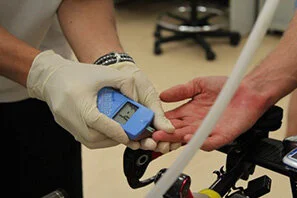Caffeine Intake for Time Trialing
/A lot of athletes are in the habit of using caffeine to enhance their time trial performance. What is really interesting to see in emerging literature from the science world is how much variability there can be in response to caffeine. There can be variability based on the timing of ingestion, but also variability between different individuals that has been linked to the presence of certain genes. The simple takeaway is to dial in an individual’s best use of caffeine it will take some testing of different scenarios. Here are a few different ideas to try in training:
Read More





















